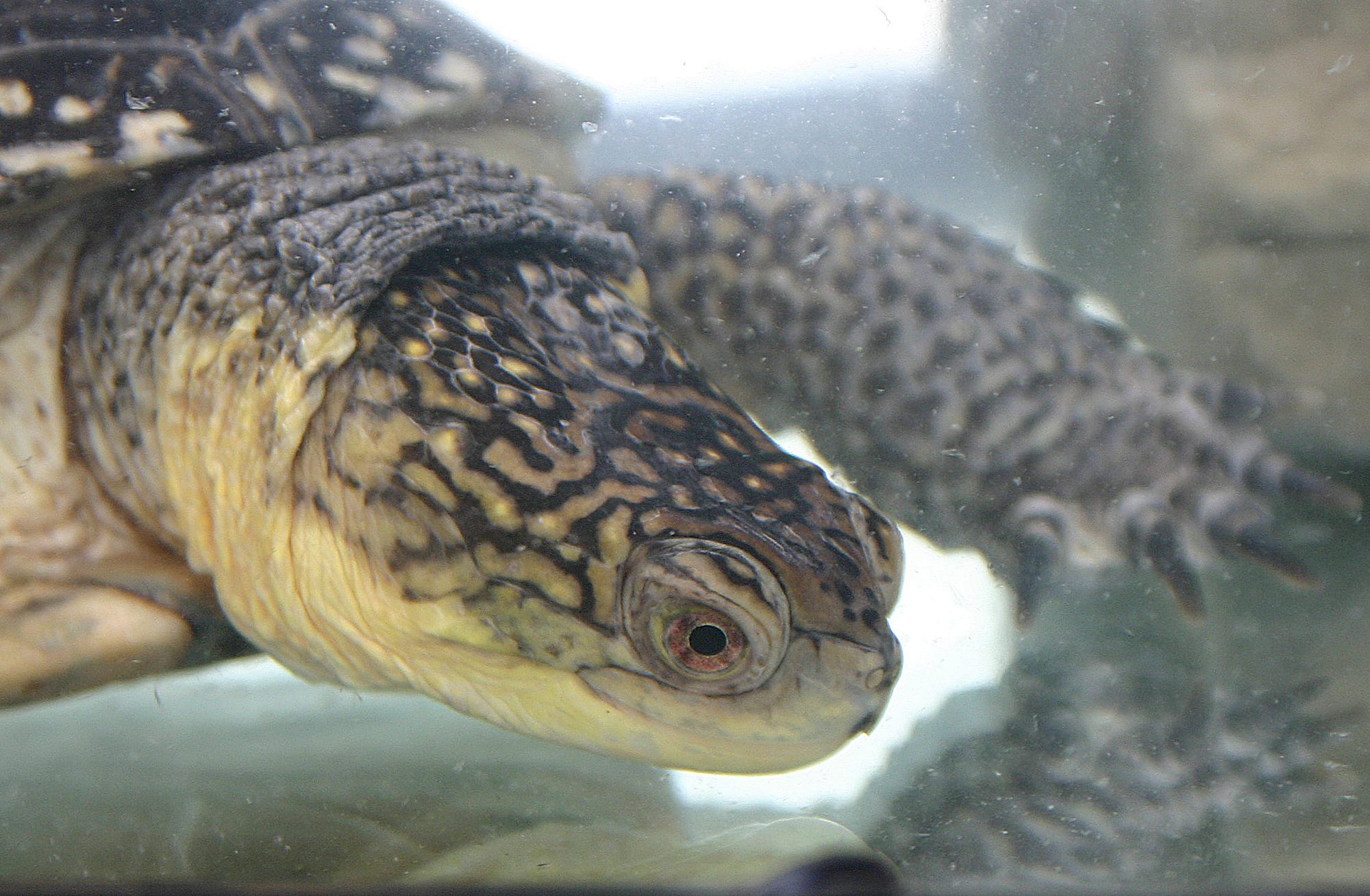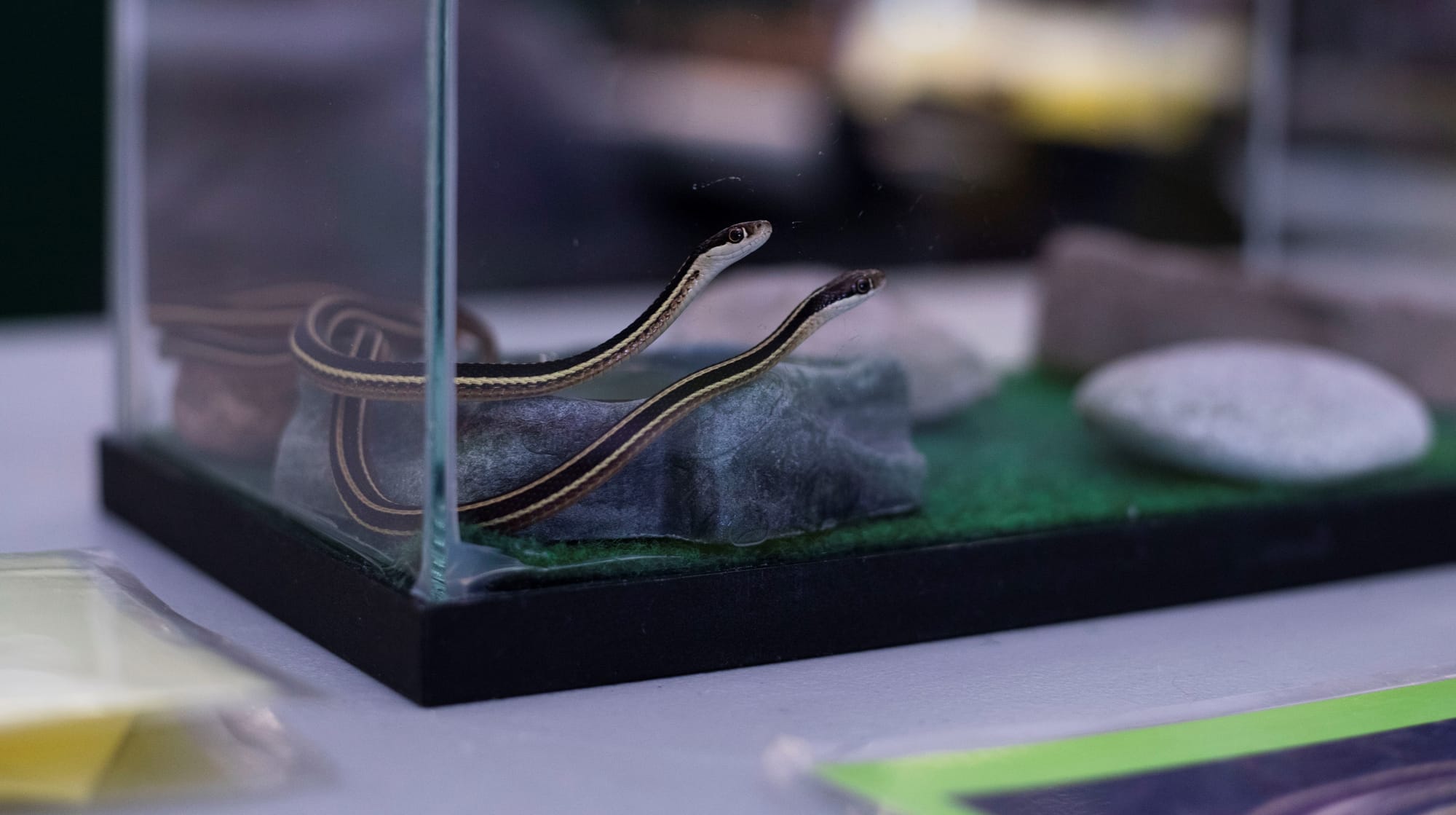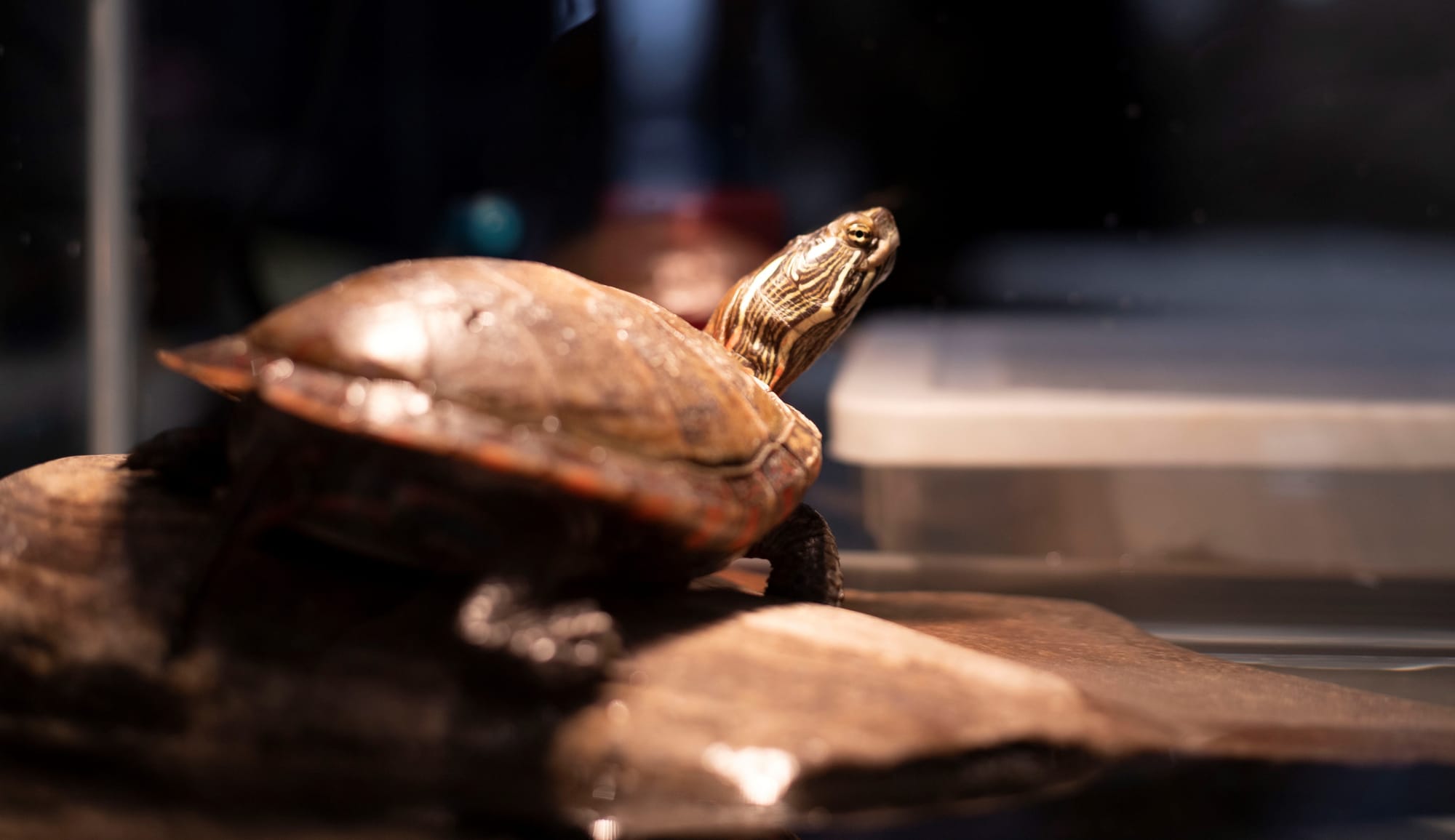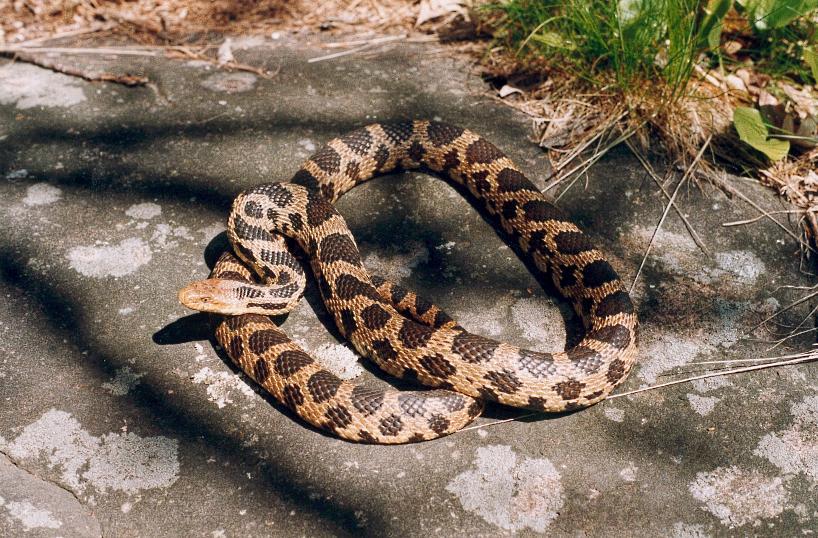Rental Program
Introduction and Information
The benefits of utilizing live animals for natural heritage education programs have long been recognized. Although print media, video, and preserved specimens all play an important role, people are fascinated by viewing live specimens and observing their feeding, thermoregulation, and other behaviours firsthand. Opportunities for hands-on activities, where suitable, are even better. Involving our sense of touch works wonders to help people overcome fears, and to hold attentions long enough for conservation messages to sink in.

However, there are biological, ethical and financial concerns with the use of live animals. It is not always easy to find the desired specimens, so considerable search time may be required. Many species or populations are under stress, so removing wild specimens should be avoided as much as possible, and may be contrary to the law. The practice of capturing, temporarily holding, and then releasing animals can cause problems including poor nutrition and loss of body weight, alteration of behaviour towards people, and potential disease outbreaks. In many cases, the survival of released specimens is questionable, particularly if they are not released at the original point of capture.

The public also exhibits a growing concern towards the use in captivity of animals taken from the wild. Criticism may be avoided through the use of captive-born specimens, and ensuring that they receive proper care and housing.
 Photo Courtesy of Leandra Photography Instagram: @leandra.t.photography
Photo Courtesy of Leandra Photography Instagram: @leandra.t.photography
It is greatly preferred to use specimens which are born in captivity, or where wild-collected specimens are necessary, to keep them in captivity permanently as part of a long-term educational effort. This creates problems for seasonal operations, where money and staff may not be available in the off-season to care for the animals.
With all these concerns in mind, why not rent display animals for your natural heritage programs?
It is easy and affordable to rent specimens for the season, with proper housing, food, interpretive materials, and care information all provided.
The Benefits of Renting Display Animals

Animals are captive bred wherever possible, minimizing public concern.
Eliminates the need to capture specimens, saving time and protecting populations at risk.
Eliminates the need to release specimens back into the wild which may be habituated to people, carry diseases, etc.

Eliminates the need to care for specimens during the off-season.
Provides access to proper care information for the animals, and telephone support for problems.
Capital budget for displays is minimized.
Legalities
Sciensational Sssnakes!! maintains a large and diverse collection of Ontario's reptiles and amphibians, for use in our educational shows and displays, and for display by parks, conservation areas, and other venues. Our goal is simple: to help conserve our native herpetofauna by educating people about its interest, importance, and the pressures facing many species in the wild. Sciensational Sssnakes!! is licensed by the Ministry of Natural Resources and Forestry. Specimens are legally obtained, from captive stock wherever possible. Facilities wishing to rent certain native species at risk may require permission and permits from their local MNRF office. All rentals are recorded in the Sciensational Sssnakes!! logbook and reported to the Ministry.